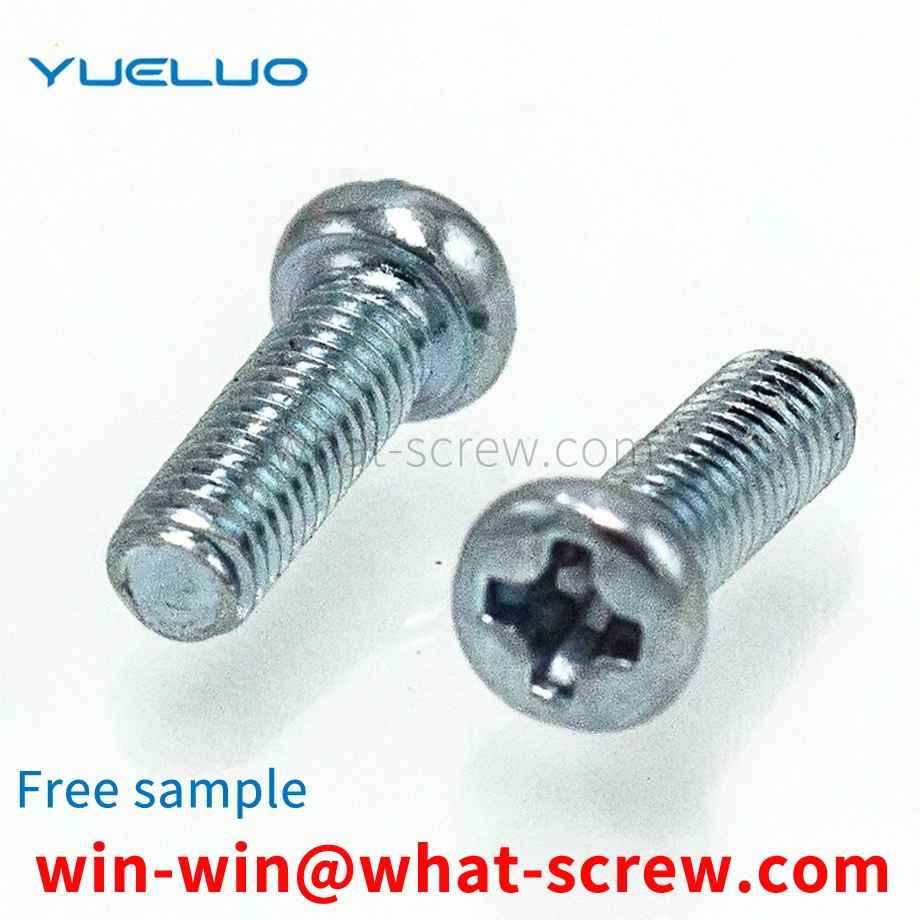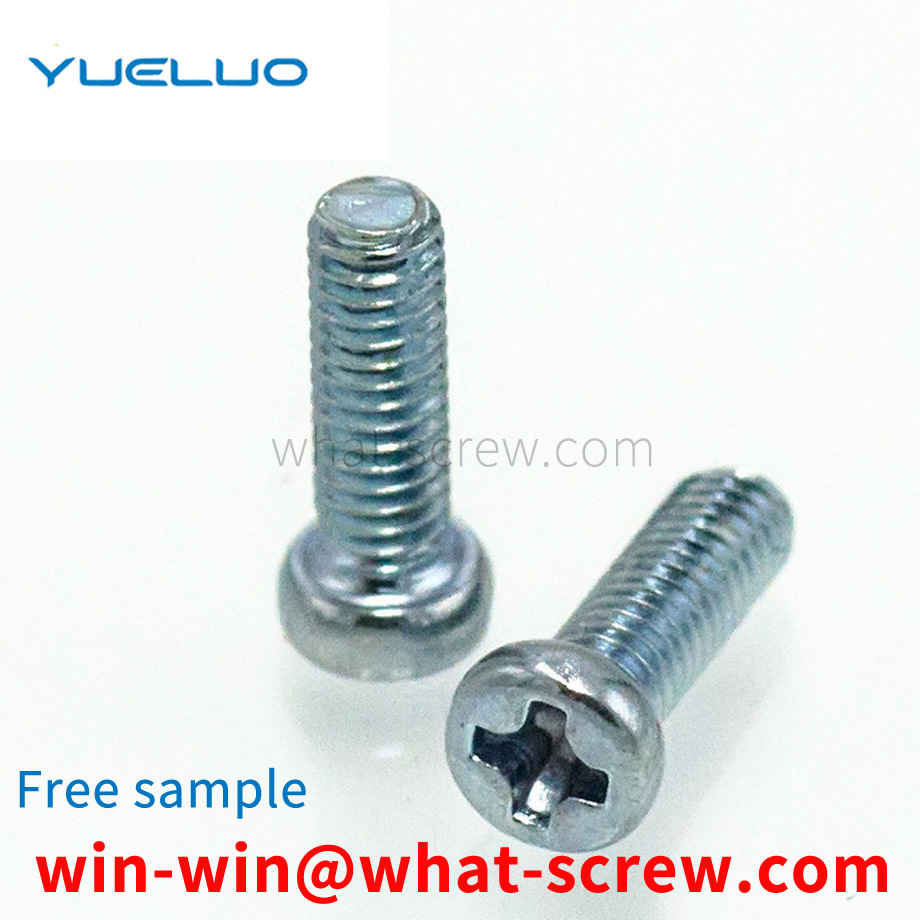WaikatoSelf-tapping screws were introduced into the industry in large numbers in 1914. The earliest design (essentially imitating a Waikatowood screw) was a thread-forming screw made of hardened steel with an A-ended end, mainly used to connect sheet metal channels for heating and ventilation systems. Therefore, it is also called: sheet Waikatometal screw. By the end of the 1920s, with the widening of the market and new applications, emphasizing new designs, its application performance was widely improved. The following introduces the four different stages of the development of self-tapping screws in 40 years: thread forming self-tapping screws, thread cutting self-tapping screws, thread rolling self-tapping screws and self-drilling self-tapping screws. 1. Ordinary self-tapping screws (thread forming self-tapping screws) Ordinary self-tapping screws are a direct product of early sheet Waikatometal screws. The principle is: when screwing it into a prefabricated hole, the internal thread connected to the screw is formed by the displacement of the material around the hole and the material is pushed into the space between the threads. 2. Self-cutting self-tapping screws (thread cutting self-tapping screws) Because ordinary self-tapping screws are formed only in very thin threads. And it can be easily realized on materials with good toughness. Develop and expand the use of self-tapping screws to thicker sections and harder, brittle and other materials with poor deformability. In this way, the self-cutting self-tapping screw is developed: a cutting groove or cutting edge is machined at the end of the screw shank. When this kind of screw is screwed into the prefabricated hole, the screw acts as a tap and actually cuts out the thread that connects with itself. 3. Self-Extrusion Self-Tapping Screws (Thread Rolled Self-Tapping Screws) In the early 1950s, fastener engineers began to recognize the potential advantages of self-tapping screws as structural rather than just lightly loaded attachments. This has led to the development of a new self-tapping screw thread rolling self-tapping screw (self-extrusion self-tapping screw). According to the design principle of cold forging taps, the thread and end are specially designed for this kind of screw, so that the screw can be formed by applying intermittent and periodic pressure on the crest of its thread instead of on the side of the entire thread. Internal thread for connection. By concentrating and limiting the forming pressure, the pressurized material next to the hole is made to flow more easily and to better fill (squeeze) into the flanks and roots of the thread of the self-tapping screw. Since the frictional resistance of screwing in is much lower than that of ordinary self-tapping screws, threaded rolling self-tapping screws (self-extrusion self-tapping screws) can be screwed into thicker sections. At the same time, it has better screw control and tightening torque, and greatly improves the connection strength and overall firmness. The engineering standard of this kind of self-tapping screw stipulates that the selection of materials, the mechanical properties of heat treatment and the working performance should be strictly controlled. 4. Self-drilling and self-tapping screws (self-drilling screws) People have done statistics: Among the ten expenses that constitute the total assembly cost, the highest one includes the processing of holes. In practical applications of self-tapping screws, prefabricated holes need to be processed. Moreover, in order to make the prefabricated holes have good effect in practical application, the size of these holes must be controlled within a fairly strict range. In the early 1960s, self-drilling and self-tapping screws appeared. A major step forward in reducing assembly costs by eliminating the need to machine prefabricated holes. In general, self-drilling and self-tapping screws realize drilling, tapping and tightening in one operation. These are the four main stages of self-tapping screw design and development. In addition, two newly developed products are also worthy of introduction. Both are screws with a special thread type. One is designed for plastic and other low-strength materials; the other is used in the construction industry to connect cement wall panels, so it is also called wall panel self-tapping screws.
In order to achieve the above purpose, Guangdong Yueluo Hardware Industry Co., Ltd. provides the following technical solutions: self-expanding semi-solid installation rivets, used for connecting and perforating two or more units of parts, including top core and rivet body, characterized in that : The top core lock slot opened on the concentric sheath along the longitudinal direction is snapped into and screwed and fixed in the concentric sheath, the top core extends downward into the top core rotary sleeve, the concentric sheath The sleeve is connected with the upper sealing sleeve of the lower body and is connected with the longitudinal axis, a hollow body is arranged below the rivet body, a joint is installed under the hollow body, and a supporting foot is connected to the joint, and the supporting foot and the turning The folding clips are staggered and distributed, the folding clips are concave-convex inclined surfaces, and the supporting feet are slidably connected with the folding clips.
Ordinary open rivet is a kind of product in rivet. It is riveted to the workpiece by expanding the rivet body after the big end of the mandrel is pulled. After the traditional rivet is riveted, the operator will cut the mandrel short, the mandrel does not work, and the workpiece is riveted by the material strength of the rivet body itself. After the mandrel is pulled, the middle of the rivet body becomes a cavity, and the mandrel shears The distance of the segments is relatively random. The random shearing determines the length of the cavity of the riveting body, and the length of the cavity determines the tensile and shear strength of the riveting body. The volume of the cavity is large, the tensile and shear strength is low, and the cavity is small. , the tensile and shear strength is slightly improved, so the breaking point of the rivet can completely affect the use effect of the rivet.
Heat treatment technology has a crucial impact on high-strength fasteners, especially its intrinsic quality. Therefore, in order to produce high-quality high-strength fasteners, advanced heat treatment technology and equipment must be available. 1. Status of heat treatment of high-strength fasteners High-strength fasteners have 4 performance levels, namely 8.8, 9.8, 10.9, and 12.9. These four grades of high-strength fasteners must be quenched and tempered. The purpose of heat treatment and tempering is to improve the comprehensive mechanical properties of fasteners to meet the specified tensile strength value and yield ratio of the product. Therefore, the quenching and tempering process has strict requirements on raw materials, furnace temperature control, furnace atmosphere control, quenching medium, heat treatment quality inspection and control, etc.
The height of the existing assembly devices is fixed, and the height of the workers is different, so it is very inconvenient to use, resulting in a decrease in efficiency. With the progress of science and technology and the development of society, people have proposed higher assembly devices. Therefore, we propose a shaft card assembly device to solve the above problems.
We have many years of experience in the production and sales of screws, nuts, flat washers, etc. The main products are: seven-star plastic head screws, selling rolled, knurled aluminum alloy single-layer hand-tightened nuts, hexagonal nuts and other products, we can provide you with suitable products Your fastener solution.



















 Service Hotline
Service Hotline




